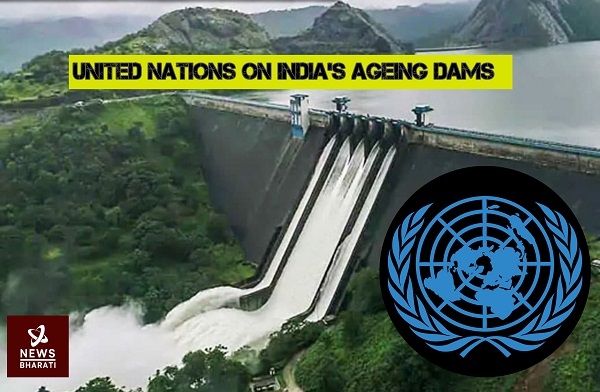UN reports about India's age old dams and water infrastructure
Total Views |
New Delhi, Jan 28: The United Nations (UN) have released its report titled ‘Ageing water infrastructure: An emerging global risk’ about the ageing of dams in India. The report highlights that, some thousand large dams in India will be around 50 years old in 2025. The UN University’s Canadian-based Institute for Water, Environment and Health had compiled the report. The analysis was done on the dam decommissioning or ageing from the USA, Canada, France, Japan, India, Zambia and Zimbabwe.

The UN has warned that such ageing structures across the world possess a growing threat to the mankind. The report notes that, by 2050 most people on Earth will live downstream of the thousands of dams that were built in the 20th century. As per the report, 58700 large dams worldwide were constructed in between 1930 and 1970. Those dams have the design life of 50 to 100 years. The report highlights that, the world is to witness another large dam-building revolution like it was in mid-20th century. But these dams will then be showing their age. It puts forth that 32,716 large dams which account for 55 percent of the world’s total are found in four Asian countries namely China, India, Japan, and South Korea.
The report points out that approximately 3.5 million people are at risk if India’s Mullaperiyar dam in Kerala will fail. The dam was built over 100 years ago and is constructed with concrete ‘surkhi’ which is a combination of limestone and burnt brick powder. According to the report increase in the cases of dam failures, increasing costs of dam repair and maintenance, increase in the reservoir sedimentation, and loss of functionality and effectiveness of the dams 'strongly interconnected' manifestations are some important signs of ageing of dams.
The report provides an overview of dam ageing by world region and primary function; water supply, irrigation, flood control, hydropower, and recreation. It also details the increasing risk of older dams, the rising maintenance expense, the declining functionality due to sedimentation, the benefits of restoring or redesigning natural environments, and the societal impacts, both pros and cons, that need to be weighed by policy makers in order to decide what to do. Notably, the nature of these impacts varies significantly between low and high income countries.


